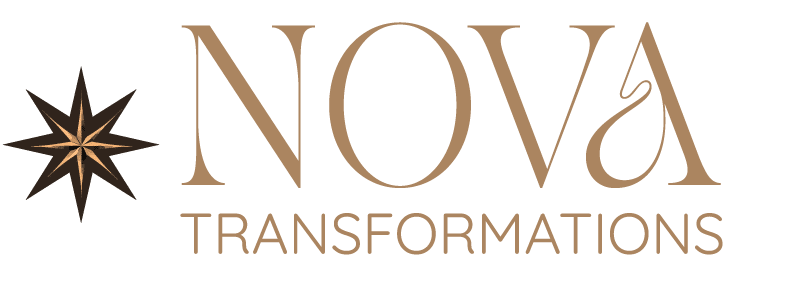The Importance of Medication-Assisted Treatment (MAT)
Medication-Assisted Treatment (MAT) is becoming increasingly recognized as a critical component in the recovery of individuals facing substance use disorders (SUD). This approach combines FDA-approved medications with counseling and behavioral therapies, providing a comprehensive method to support recovery efforts.
Advantages of MAT
MAT offers several benefits that enhance recovery outcomes for individuals struggling with addiction. By alleviating withdrawal symptoms and reducing cravings, MAT significantly improves the chances of long-term recovery. Its effectiveness is particularly noted in treating alcohol and opioid use disorders, making it a fundamental strategy in various treatment settings.
| Key Advantages of MAT | Description |
|---|---|
| Reduces Withdrawal Symptoms | Alleviates physical discomfort associated with substance withdrawal. |
| Lowers Overdose Risks | Helps manage dose levels, reducing the likelihood of overdose. |
| Enhances Social Functioning | Supports individuals in reintegrating into their daily lives and responsibilities. |
| Individualized Treatment | Personalizes recovery plans to address the unique needs of each patient. |
| Evidence-Based Approach | Trustworthy method backed by research and studies in addiction treatment. |
The personalized nature of MAT goes beyond mere medication selection. It addresses the holistic needs of individuals, incorporating their physical, psychological, and social aspects into the treatment process. This “whole-patient” approach not only improves treatment outcomes but also fosters a supportive environment conducive to recovery (Encore Recovery).
MAT in Primary Care Offices
Implementing MAT in primary care settings expands access to treatment for those with substance use disorders. This model effectively narrows the gap between the number of individuals needing treatment and the available resources. By integrating MAT into primary healthcare, barriers such as stigma, cost, and accessibility are significantly minimized.
The integration of MAT in primary care allows healthcare providers to adopt an evidence-based perspective, recognizing the serious nature of addiction as a disease that requires comprehensive care. Offering treatment within familiar environments assures patients feel more comfortable seeking help, further promoting recovery.
By choosing Nova Transformations, you gain access to industry-leading substance abuse services that emphasize MAT as a key component of recovery. Their approach ensures that you or a loved one can receive personalized support through various programs designed to address the challenges of substance use.
FDA-Approved Medications for Opioid Use Disorder
When considering your options for medication-assisted treatment for opioid use disorder (OUD), it’s vital to understand the FDA-approved medications available. The three primary medications are buprenorphine, methadone, and naltrexone, each playing a unique role in the treatment process.
Role of Buprenorphine
Buprenorphine is a partial opioid agonist that alleviates cravings and withdrawal symptoms without producing the extreme highs and lows associated with illicit drug abuse. It is particularly effective for individuals with less severe cases of substance use disorder. You may find this medication available either alone or in combination with naloxone to reduce the potential for misuse (Behavioral Health Group).
| Buprenorphine Facts | Details |
|---|---|
| Type | Partial opioid agonist |
| Effects | Reduces cravings and withdrawal symptoms |
| Abuse Potential | Lower compared to full agonists |
| Combination | Often combined with naloxone |
Methadone Treatment
Methadone is a full opioid agonist that is administered under medical supervision. It helps ease cravings and withdrawal symptoms by preventing the euphoric effects associated with opioids. Methadone is considered one of the safest and most effective treatment options for OUD when used as prescribed. It allows you to stabilize while working through recovery.
| Methadone Facts | Details |
|---|---|
| Type | Full opioid agonist |
| Effects | Alleviates cravings and withdrawal symptoms |
| Administration | Taken orally in controlled doses |
| Supervision | Requires medical oversight |
Naltrexone’s Benefits
Naltrexone works differently by acting as an opioid antagonist. It blocks the activation of opioid receptors, thus reducing cravings and preventing opioids from producing a “high.” This medication is often available as a long-acting injectable, making it a suitable option for individuals who may struggle with taking medication regularly. Its efficacy can empower you in your recovery journey by allowing for a more stable treatment experience (Behavioral Health Group).
| Naltrexone Facts | Details |
|---|---|
| Type | Opioid antagonist |
| Effects | Blocks opioid receptors, reduces cravings |
| Administration | Available as an injectable |
| Suitability | Ideal for those with adherence challenges |
Understanding these medications can help you or your loved one make informed decisions about treatment options. For more insights on effective treatment solutions, consider exploring our addiction treatment resources available at Nova Transformations.
Understanding Medications for Opioid Use Disorder (MOUD)
When considering treatment options for opioid use disorder (OUD), it is essential to understand the different medications available, especially those used in medication-assisted treatment. The three main types of medications include methadone, buprenorphine, and naltrexone. Each has unique properties and benefits that can support your recovery journey.
Methadone Overview
Methadone is a long-acting synthetic opioid agonist medication. It is used to prevent withdrawal symptoms, reduce cravings, and block the euphoric effects of illicit opioids in individuals with opioid dependence. Taken orally, methadone has demonstrated a long history of effectiveness in treating OUD. It is considered one of the safest and most effective treatment options when prescribed appropriately (Arizona Health Care Cost Containment System (AHCCCS)).
| Methadone Characteristics | Details |
|---|---|
| Type | Full opioid agonist |
| Administration | Oral |
| Primary Use | Reduce cravings and withdrawal symptoms |
| Effectiveness | Reduces overdose risk by maintaining opioid tolerance |
People using methadone are 50% less likely to die from an overdose compared to those not receiving treatment or those on naltrexone (NACo).
Buprenorphine Explained
Buprenorphine is a semi-synthetic opioid medication acting as a partial agonist at opioid receptors. It can alleviate withdrawal symptoms associated with opioid dependence without causing significant euphoria or sedation. Available in various forms including sublingual and subcutaneous, buprenorphine is often combined with naloxone (known as Suboxone) to further limit the potential for misuse.
| Buprenorphine Characteristics | Details |
|---|---|
| Type | Partial opioid agonist |
| Administration | Sublingual, subcutaneous |
| Primary Use | Reduce cravings and withdrawal symptoms |
| Overdose Risk | Low |
Buprenorphine is particularly effective for less severe cases of substance use disorder, aiding individuals in avoiding the dramatic shifts associated with illicit drug abuse.
Naltrexone in Treatment
Naltrexone is an opioid antagonist that prevents the activation of opioid receptors, thus decreasing cravings while blocking the euphoric effects of opioids. It is frequently administered as a long-acting injectable, making it ideal for patients who may struggle with adherence to daily medications (Behavioral Health Group).
| Naltrexone Characteristics | Details |
|---|---|
| Type | Opioid antagonist |
| Administration | Injectable, oral form available |
| Primary Use | Block opioid effects and cravings |
| Abuse Potential | None |
It should be noted that individuals should avoid using naltrexone if currently taking opioids, as this could result in sudden withdrawal symptoms (Arizona Health Care Cost Containment System (AHCCCS)).
Understanding the unique functions and benefits of methadone, buprenorphine, and naltrexone is crucial for selecting the right support for your recovery journey. Implementing medication-assisted treatment can significantly enhance the probability of successful long-term recovery in those dealing with opioid use disorder. For personalized care options, consider exploring treatment at Nova Transformations.
Differences Between MAT and MOUD
Understanding the differences between Medication-Assisted Treatment (MAT) and Medications for Opioid Use Disorder (MOUD) is vital for anyone seeking effective drug and alcohol treatment. This knowledge can empower you or a loved one to make informed decisions about recovery options.
MAT vs. MOUD
Medication-Assisted Treatment (MAT) encompasses a holistic approach to treating substance use disorders. It combines FDA-approved medications, counseling, and behavioral therapies to support the recovery process. This multi-faceted approach addresses the psychological and social aspects of addiction, making it more comprehensive than medication alone.
Conversely, Medications for Opioid Use Disorder (MOUD) primarily refer to the use of specific medications as standalone treatments for opioid dependence. MOUD focuses on managing withdrawal symptoms and cravings but does not typically include the counseling and behavioral aspects found in MAT. It’s essential to recognize that while MOUD is a critical component of treatment, it may not address all underlying issues related to addiction, which is why MAT may be advantageous for many individuals.
| Treatment Type | Definition | Components |
|---|---|---|
| MAT | A comprehensive treatment combining medication, counseling, and behavioral therapies | Medications + Counseling + Behavioral Therapy |
| MOUD | A medication-focused approach for treating Opioid Use Disorder | Medications only |
For personalized assistance with treatment options, choosing a facility like Nova Transformations can provide a more integrated approach to recovery.
Comprehending Treatment Options
When seeking treatment, knowing your options can significantly impact your recovery journey. Each type of treatment has different benefits and suitability based on individual needs.
MAT can provide a supportive environment with extensive resources, including the following:
- Individual Therapy: Focuses on your personal experiences and triggers.
- Group Therapy: Provides a sense of community and shared experiences to encourage healing.
- Holistic Treatments: Incorporates nutrition, physical fitness, and wellness strategies.
On the other hand, MOUD specifically utilizes medications like buprenorphine, methadone, and naltrexone to help manage opioid dependence.
Here’s a quick summary of the three FDA-approved medications used in MOUD:
| Medication | Function | Additional Information |
|---|---|---|
| Buprenorphine | Reduces withdrawal symptoms and cravings | Often used in combination with naloxone to prevent misuse |
| Methadone | Suppresses withdrawal symptoms and prevents cravings | Long-acting; needs to be administered in a controlled setting |
| Naltrexone | Blocks opioid receptors, decreasing cravings | Available as a long-acting injectable for easier compliance |
Choosing the right treatment is crucial for your recovery journey. At Nova Transformations, you can find tailored programs that incorporate both MAT and MOUD approaches to address your specific needs. Explore our offerings in alcohol rehab, opioid rehab, and other specialized programs to find the best fit for you.
Choosing the Right Treatment Provider
Selecting the right treatment provider is a crucial step in your journey toward recovery through medication-assisted treatment (MAT). The effectiveness of MOUD is often enhanced when facilitated by skilled clinicians who understand the complexities of substance use disorders.
Role of Clinicians in MAT
Clinicians play a vital role in the success of medication-assisted treatment. These professionals include doctors, physician assistants, and advanced practice nurses, all of whom are integral in building relationships with individuals facing substance use disorders (SUD) and opioid use disorder (PubMed). A strong therapeutic alliance fosters a supportive environment where you can openly discuss your challenges and progress.
A clinician’s responsibilities extend beyond merely prescribing medication. They assess your medical history, evaluate your mental health status, and consider your unique circumstances and preferences when developing a treatment plan. This collaborative approach ensures comprehensive care tailored to your needs. Personalization is key; clinicians must address the physical, psychological, and social aspects of addiction to provide effective support throughout the recovery process (Encore Recovery).
Benefits of Personalized Treatment Plans
Personalized treatment plans are essential for achieving positive outcomes in MAT. By evaluating each individual’s specific needs, these tailored approaches significantly enhance the effectiveness of medication-assisted treatment and increase the likelihood of sustaining recovery. According to research, taking a holistic and patient-centered approach contributes to long-term success.
Key benefits of personalized treatment plans in MAT include:
| Benefit | Description |
|---|---|
| Enhanced Effectiveness | Tailoring treatment to address unique needs ensures better medication responses. |
| Increased Compliance | Individualized plans often result in higher adherence to treatment protocols. |
| Holistic Support | Addressing psychological and social factors provides a more comprehensive recovery experience. |
| Improved Satisfaction | Personalized care fosters a supportive environment that promotes patient engagement and satisfaction. |
You deserve a treatment provider who prioritizes your unique journey. At Nova Transformations, clinicians work with you to create a customized treatment approach that takes into account your preferences and lifestyle, ensuring you receive the best care possible. Their commitment to individualized treatment can help you navigate the complexities of recovery from substance use disorders, providing you with the tools and support you need for lasting change.
Overcoming Challenges in Medication-Assisted Treatment
Providing effective medication-assisted treatment (MAT) for opioid use disorder (OUD) can be complex due to various challenges. Understanding and addressing these issues is crucial for you or your loved ones seeking recovery.
Addressing Barriers to MOUD
Individuals seeking Medications for Opioid Use Disorder (MOUD), including methadone and buprenorphine, often face numerous obstacles when trying to access treatment. Some of these barriers include:
| Barrier | Description |
|---|---|
| Long Travel Times | Many treatment facilities are located far from individuals’ homes, requiring extensive travel. |
| Insurance Limitations | Not all insurance plans cover MOUD or may impose restrictions on treatment options. |
| Financial Obstacles | The cost of treatment or associated travel can be prohibitive for some individuals. |
| Provider Stigma | Stigma from healthcare providers can deter individuals from seeking necessary treatment. |
| Lengthy Waiting Lists | A high demand for MOUD often leads to waiting lists, sometimes resulting in delays that can be life-threatening. |
With individuals sometimes dying while waiting for treatment, it is essential to advocate for better access to these lifesaving medications (NACo).
Additionally, the FDA has initiated campaigns to enhance awareness among healthcare providers about treating opioid use disorder with MOUD. They encourage proactive management of OUD akin to chronic conditions such as asthma and diabetes.
Dealing with Stigma and Discrimination
Stigma surrounding substance use disorders significantly affects individuals seeking treatment. Discrimination against those receiving MAT is not only harmful but also considered a violation of the Americans with Disabilities Act (ADA). Various entities, including drug courts and employers, have faced legal actions over discriminatory practices, resulting in settlements reaching hundreds of thousands of dollars.
It is vital to combat this stigma and foster a supportive environment for those in recovery. You can play a role in this by advocating for understanding and acceptance in your community, as well as seeking treatment from providers who respect and understand substance use disorder.
Choosing Nova Transformations for drug and alcohol treatment, including MAT and comprehensive addiction treatment, ensures you receive care that acknowledges and addresses these challenges. By providing personalized support and resources, Nova Transformations aims to remove barriers and combat stigma, paving the way for successful recovery.








